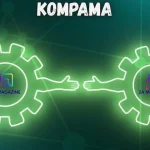Dyslexia is a neurobiological learning disability that affects as much as 5%-20% of the population, according to the Yale Center for Dyslexia and Creativity (2022).
The condition causes challenges in reading, spelling, and writing. However, those with dyslexia can overcome their language difficulties with effective intervention, which requires early and accurate identification.
Assessments like the Tests of Dyslexia (TOD™) are comprehensive tools that help educators and clinicians diagnose dyslexia and plan interventions for those struggling.
Components of the TOD
What does the Tests of Dyslexia include? The TOD is divided into three primary assessments: Screener, Early, and Comprehensive.
TOD-Screener (TOD-S)
The TOD-S is a brief assessment that identifies people who might be at risk for dyslexia.
TOD-Early (TOD-E)
Targeted toward young children, the TOD-E evaluates early literacy skills and phonological awareness.
TOD-Comprehensive (TOD-C)
The TOD-C provides a more in-depth analysis of the reading and linguistic abilities for subjects of all age groups.
Each of these three assessments measures critical areas like word recognition, phonics knowledge, reading fluency, and reading comprehension efficiency. Professionals can also evaluate linguistic risk factors like phonological awareness and rapid automatized naming—both important for understanding overall reading development.
Significance for Educators
The TOD is a valuable resource for educators for a few different reasons:
- Early Identification – TOD-S and TOD-E help educators detect risk factors of dyslexia in students as young as 5 years old. This allows for more timely interventions.
- Comprehensive Evaluation – The TOD-C gives a detailed assessment of a person’s strengths and weaknesses in reading and linguistics. With this information, teachers can design personalized educational plans.
- Intervention Planning – Based on TOD results, educators can develop more targeted strategies that address specific needs, making instruction more effective.
Research and Validation
The TOD was standardized based on a diverse sample of 2,518 people between the ages of 5 and 89. The selected population closely matched U.S. Census data for demographics like gender, race or ethnicity, parental education level, and geographic region. This standardization was essential to ensure the assessment’s reliability and validity for different populations.
Another critical aspect of a comprehensive dyslexia evaluation is the incorporation of cognitive assessments like those found in the TOD. According to research published in the Journal of Intelligence, cognitive tests are critical to diagnosing dyslexia (Mather et al., 2023). They help us understand the specific cognitive processes that affect reading development.
TOD in Educational Settings
You can effectively and successfully integrate the TOD into your own teaching practice by implementing three simple steps.
1. Professional Development
Educators and support staff must be trained to administer and interpret the TOD assessments.
2. Collaborative Approach
For best results, work with a multidisciplinary team of special educators, speech-language pathologists, and psychologists. The group of professionals can develop comprehensive support plans based on the findings of the TOD.
3. Continuous Monitoring
The TOD results can be used to establish a baseline performance metric. Then, you can regularly monitor the student’s progress and adjust interventions as needed to promote the student’s growth and success.
Support Students with Dyslexia
Indeed, the TOD gives educators a powerful framework for identifying and supporting students with dyslexia. With these assessments, teachers, support staff, and administrators can develop evidence-based interventions tailored to each student’s needs. The end result is, of course, better educational outcomes.
You can learn more about how to help students in school using specific dyslexia assessment tools at WPS.







